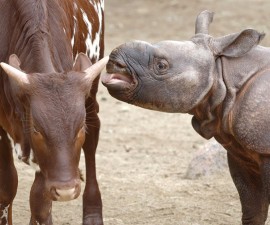BY Wendy Perkins
Photography by Tammy Spratt
Anyone with even a slight interest in filling a garden of their own finds plenty of inspiration among the botanical marvels at the Zoo and the Safari Park. Yet sometimes, a plant is best admired on our grounds rather than adding it to your yard. Floss silk trees are one of those.
Floss silk trees Ceiba speciosa are native to the subtropical forests of Argentina, Brazil, and Paraguay, but they’ve also been imported to similar climatic areas in South Africa, Australia, northern New Zealand, and the southern United States. Because they can reach heights of more than 50 feet, they aren’t well-suited for most home gardens, but they certainly make a statement in a spacious landscape.
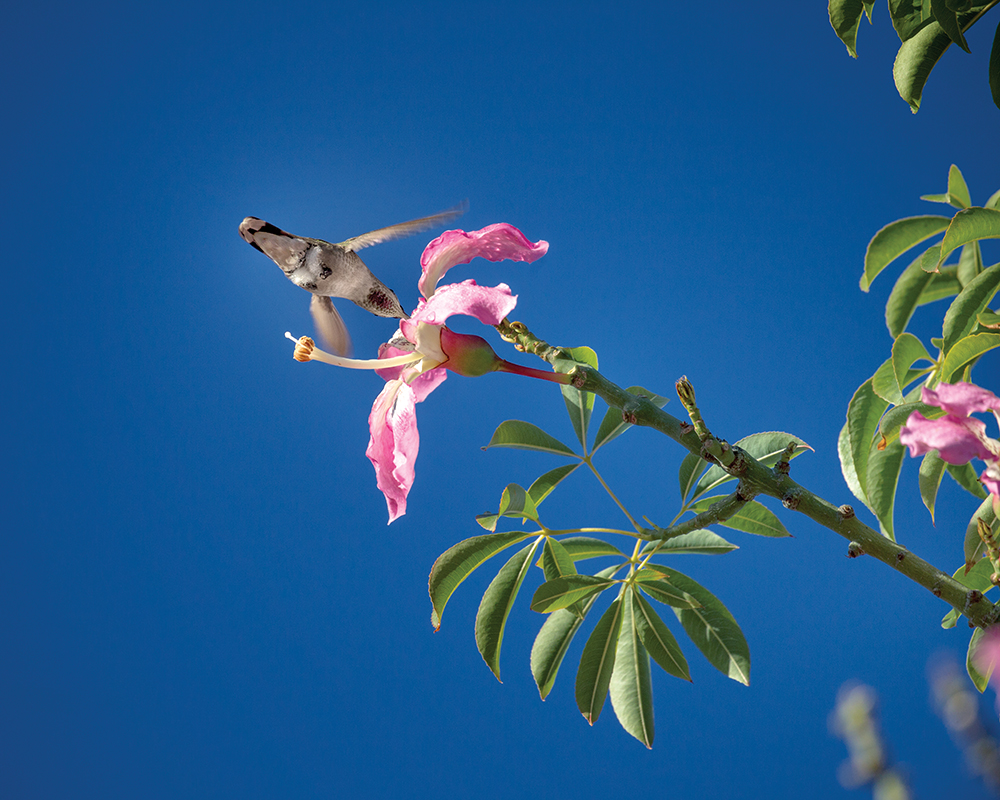
IRRESISTIBLE
Pollinators of all kinds—like this hummingbird—are drawn to the floss silk tree’s big, bold blossoms.
Each September, these trees are bedecked with bright pink or creamy yellow blossoms, depending on the species, followed by impressive plump pods that open to reveal puffy clumps of fine floss. In the spring, lush leaves grow and create a verdant canopy. Watching these trees shift through the seasons is an ongoing show. While the flowers and fluff draw our attention, this is one tree to admire from afar—its trunk is studded with sharp prickles. The message is clear: keep your distance! In the tree’s native habitat, the forbidding spikes discourage animals from gnawing the bark or scaling the trunk to forage. Of course, it’s not a perfect form of defense—arboreal New World monkeys are able to move up a different species of tree, then leap or swing over to a floss silk tree. Yet any bit of defense helps. At the Zoo and the Park, we carefully place these trees where they stand out, but won’t challenge people or our animal collection.
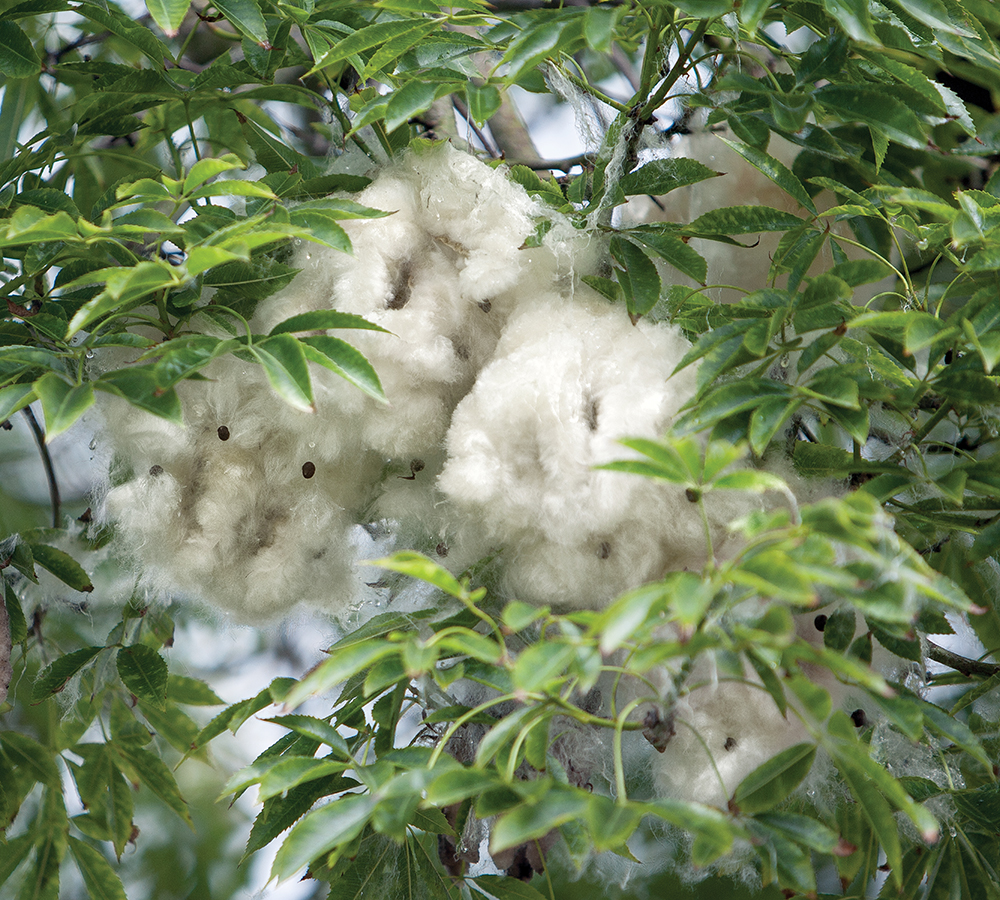
FINE FLOSS
The tree’s eponymous floss silk becomes fluffier as it dries, once the pod opens.
It might seem a bit of a mixed message: beautiful blooms and soft, cottony puffs above, with a formidable “barricade” below. But each characteristic serves the tree’s genetic survival. Throughout spring and summer, leaves gather energy to sustain the plant and need protection from being eaten. Then each autumn, the leaves drop, and the bare branches are filled with flowers that attract pollinating birds and insects.
The seed pods that form after the flowers are surprisingly large—about the size and shape of a pear! However, many people take little notice of them, until they reach their dramatic “bursting out” phase. When a ripened pod splits open, the fiber surrounding the seeds is exposed to the drying effects of sun, air, and wind. With each passing day, the moisture within the pod decreases, and the silky floss becomes more fluffy and cotton-like. Eventually, as the floss strands separate and blow or drop off, the pea-sized seeds they protect are released.
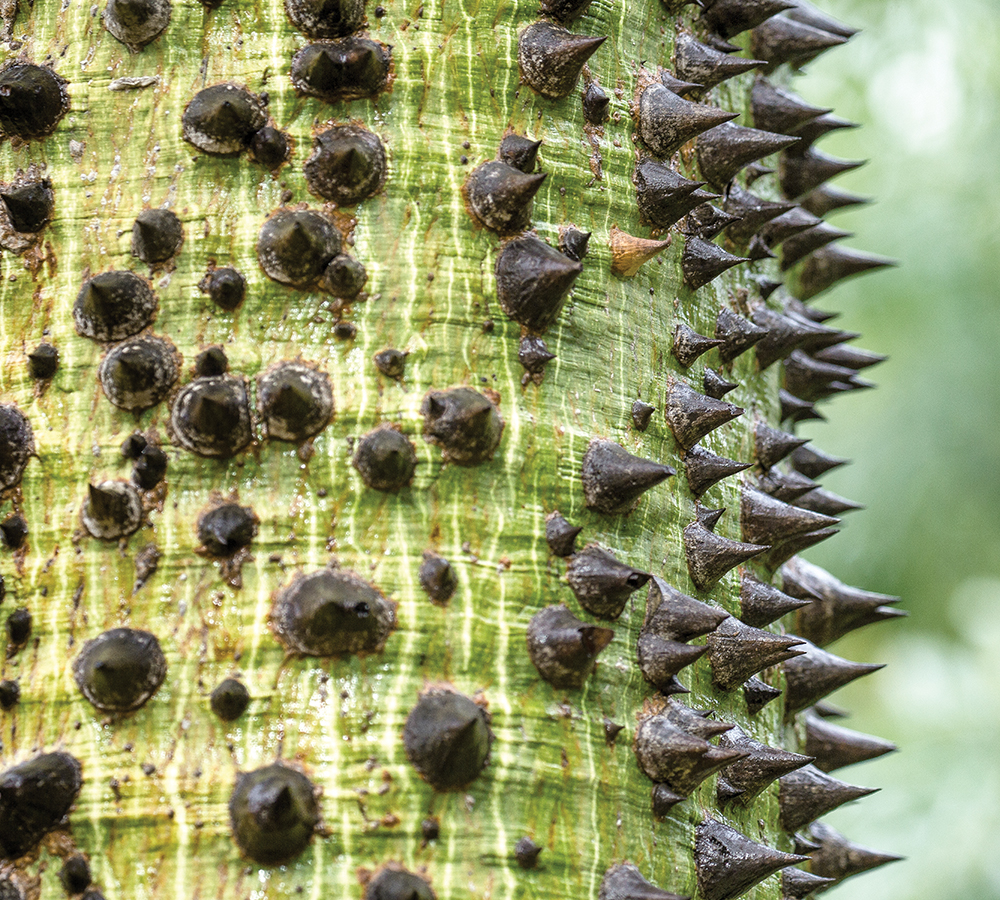
PRICKLY POINTS
The prickles studding the tree’s trunk are as painfully piercing as they look!
Often, the silk has help leaving the pod and dispersing the seeds. Birds—especially hummingbirds—pluck the soft fibers and use them to build and line their nests. Humans have long valued the silk floss, too. The fibers are too thin to be spun or woven by humans, but they have been used in the past as insulation, pillow stuffing, and filling for cold-weather gear like vests and parkas.
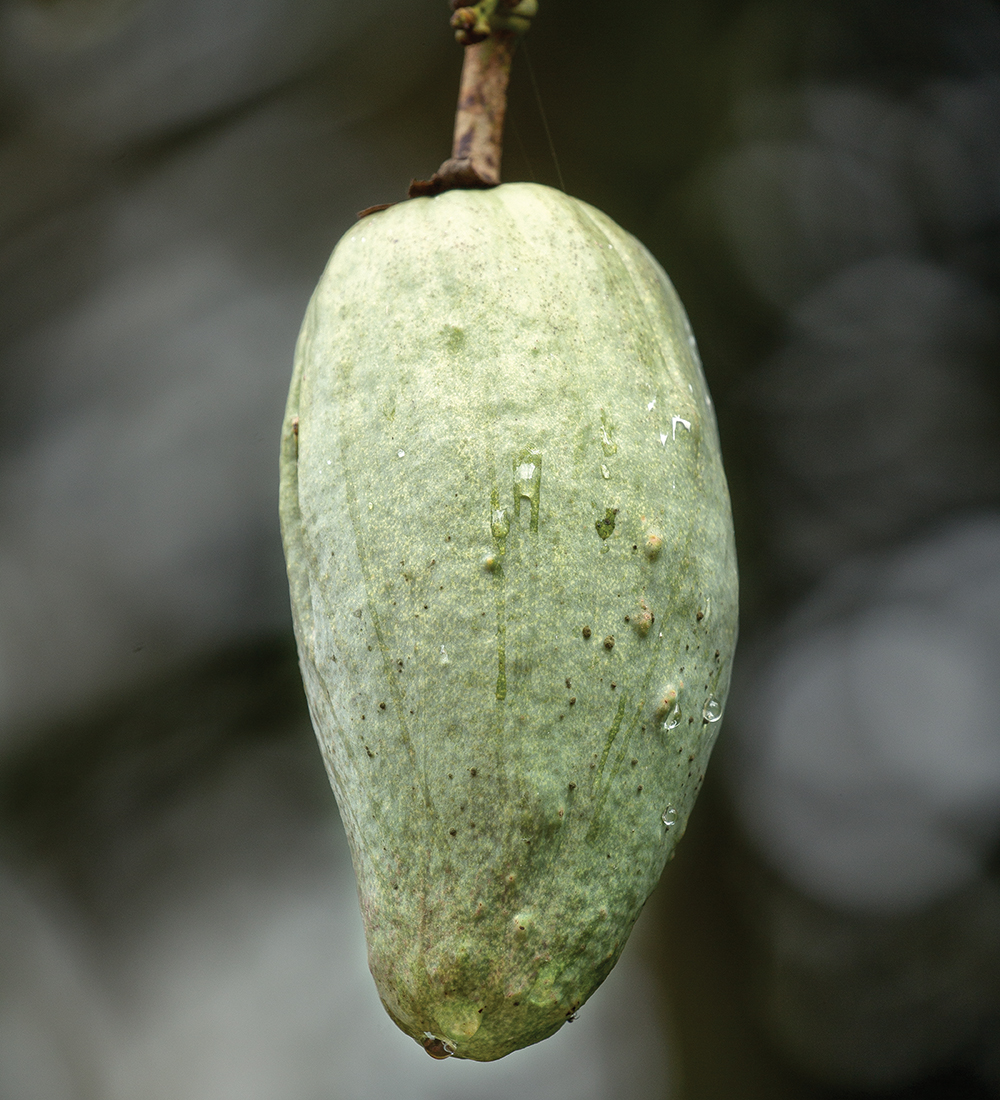
SEED VAULT
Slow to develop, a floss silk seedpod measures about six to eight inches long.
Scientific names of both plants and animals are often descriptive of the particular species. That is certainly true for for floss silk trees—the name speciosa means “beautiful.” However, anyone yearning to add one of these striking specimens to their own garden should pause to consider whether it would be a good fit—literally! These trees grow slowly to a height of more than 50 feet with a spread of about 35 feet, making them impractical for most properties. Fortunately, a visit to the Zoo or the Safari Park offers an opportunity to admire the balance of sharp and silky, without the challenges of caring for and containing this magnificent tree.



